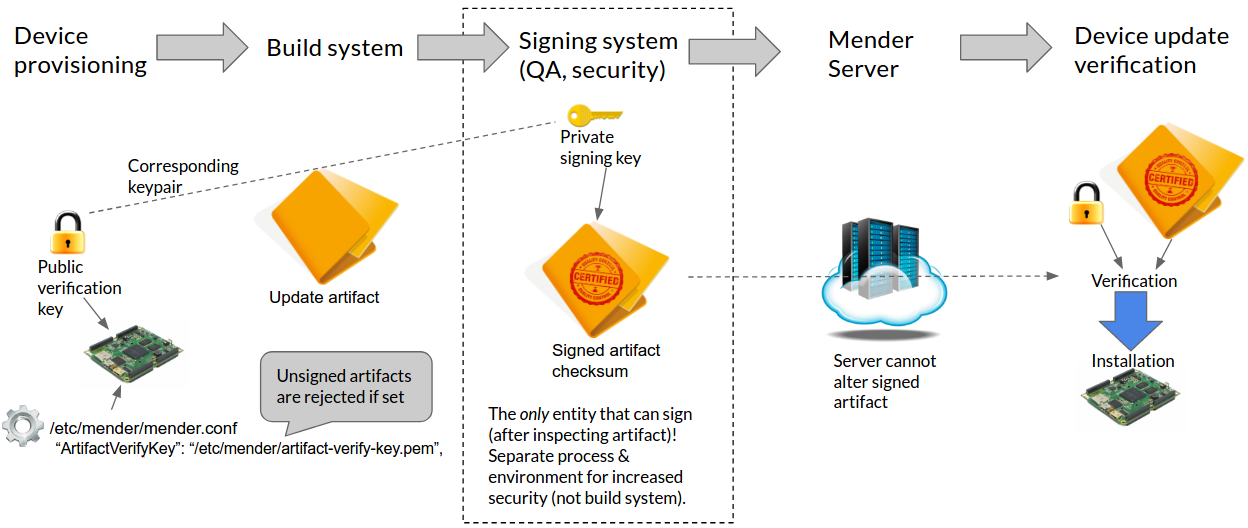Mender 1.1.0 beta ready for testing!
Today we are happy to announce that Mender 1.1.0 beta is ready for testing!
We will cover some of the major new features requested by users below, and you can see the detailed items in the release notes in the documentation.
Signature management
Mender has since day one been focused on creating a robust and secure update process, which is critical but frequently overlooked when building homegrown updaters.
We are happy to take this significantly further with the introduction of signature management in Mender 1.1.0. End-to-end signatures and verification that supports offline signing means that you can be confident that what your devices install has been approved by a trusted party. This means a vastly reduced attack surface when you deploy updates using Mender.
The diagram below shows how the signature management works at a high level.

To get started with codesigning, head over to the documentation on Signing and verification.
Device decommissioning
Mender 1.1.0 also introduces the feature to delete all data about a device, both from the UI and the API. You can see this new feature under the "Devices" tab of the Mender UI.
This allows you to decommission old devices that are no longer operational or remove test devices from your Mender Server.
Yocto Project version 2.3 (pyro) support
The meta-mender layer now includes support for the new Yocto Project release and the documentation for building Yocto Project images has been updated accordingly.
Note that according to the System requirements documentation, Mender only officially supports the latest branch of the Yocto Project (pyro in Mender 1.1). Older Yocto Project branches are placed under community support and if you need to ensure your Mender installation works with them we recommend subscribing to commerical software support.
Artifact format v2
In order to support signature management (and pre/post-install scripts soon), the Artifact format has been updated to version 2. Note that in general, older versions of the Mender client do not support new versions of Mender Artifacts.
For more information about Artifact version 2 and how you can update your Mender clients, take a look at the Mender Artifact documentation.
Try Mender 1.1.0 beta
The documentation has a new 1.1 section that includes all the resources you need to get going. To test the new features, you can start with these pages:
Give feedback
We are happy to continue to see your general feedback on Mender, be it positive or need for improvement, on the Mender mailing list. Your continued feedback ensures Mender will meet your needs even better in the future!
If you believe you have encoutered a bug, please submit your report at the Mender JIRA issue tracker.
We hope you enjoy the new features and are looking forward to hearing from you!
Recent articles
The struggle to reach global markets for medical device manufacturers: The importance of international compliance
The differences between the US FDA’s device approval process and the EU’s medical device regulation (MDR): An essential dual-compliance framework for global manufacturers
Why OTA updates are now mission critical for future-proofed device lifecycle management
Learn why leading companies choose Mender
Discover how Mender empowers both you and your customers with secure and reliable over-the-air updates for IoT devices. Focus on your product, and benefit from specialized OTA expertise and best practices.



